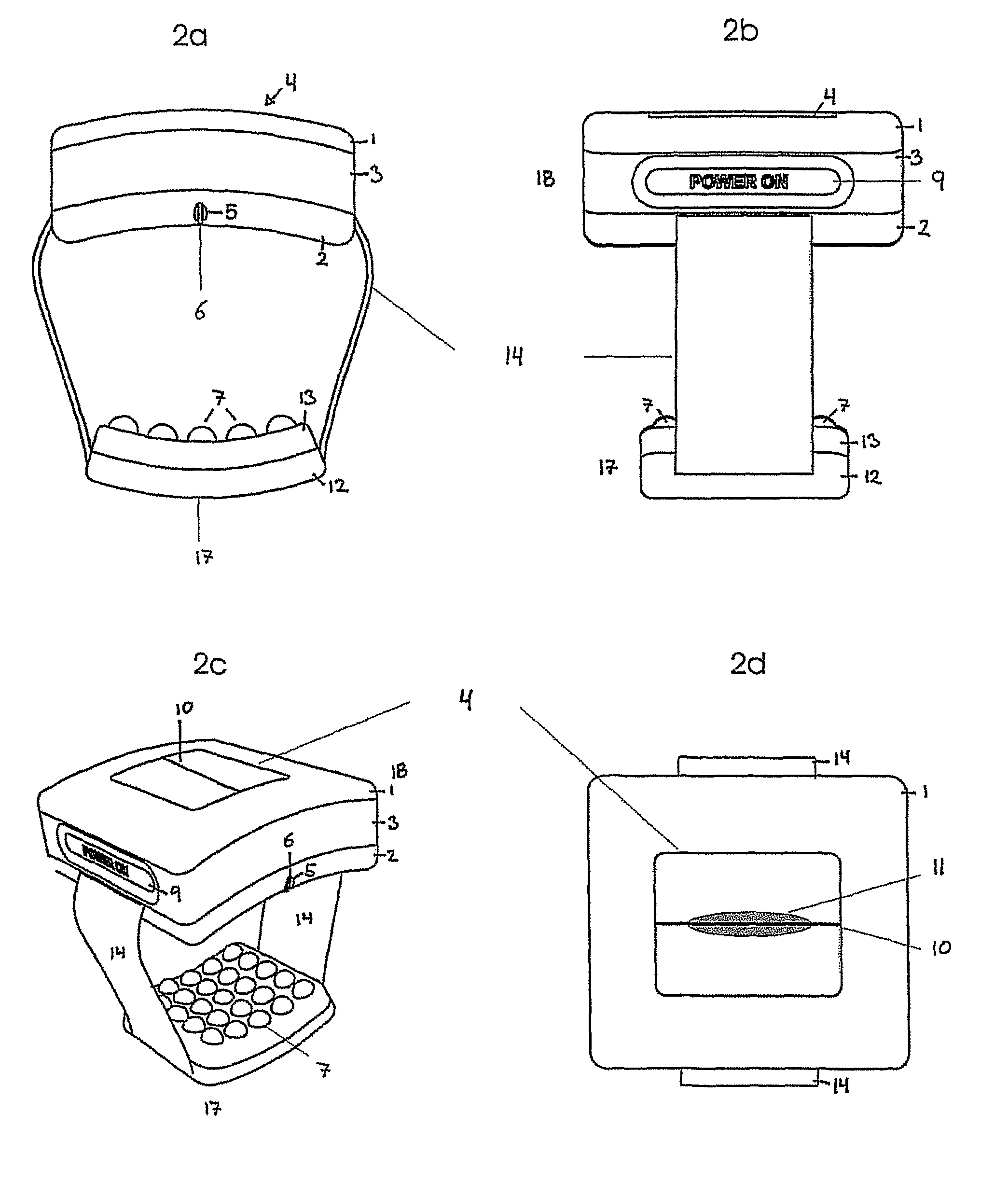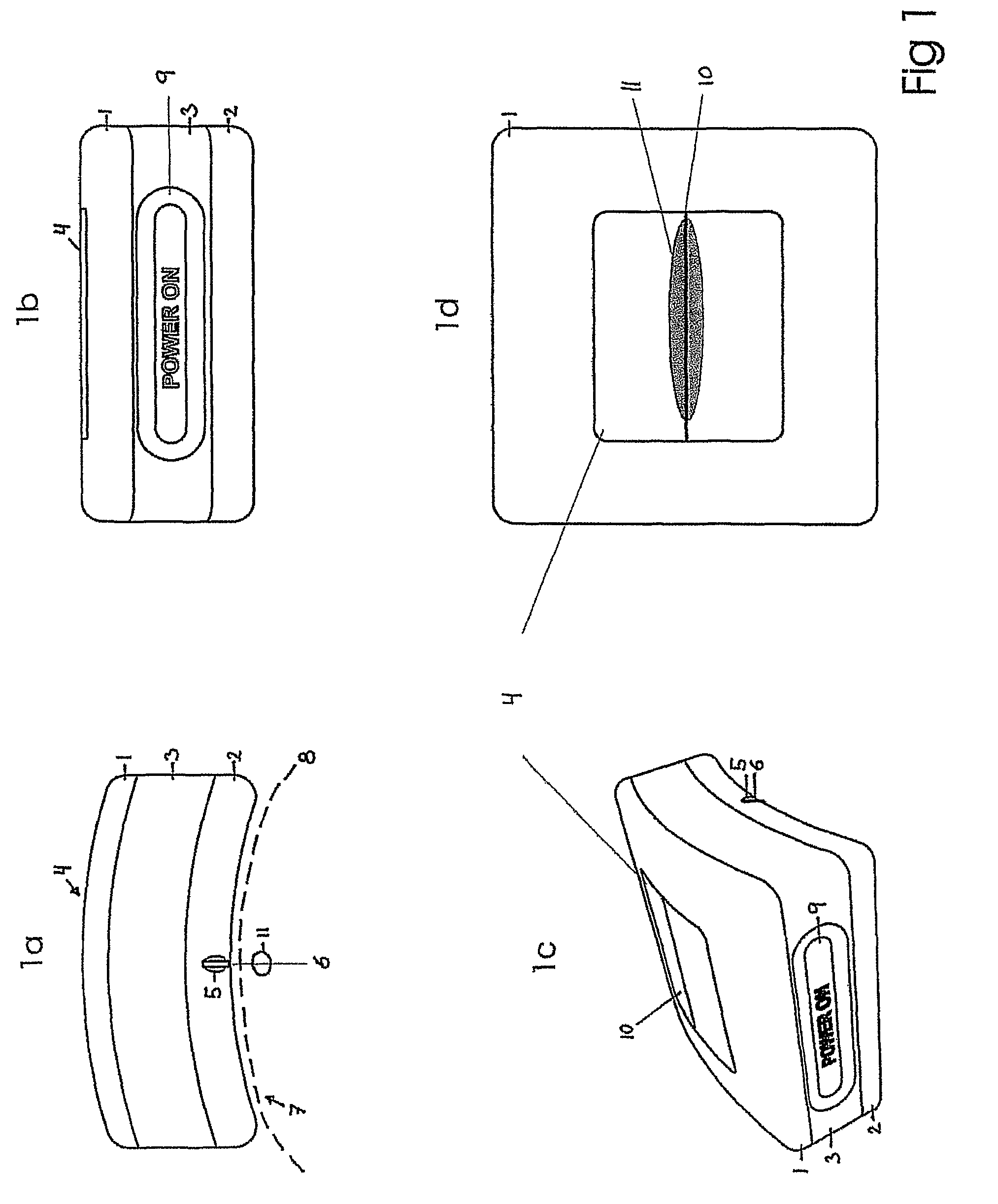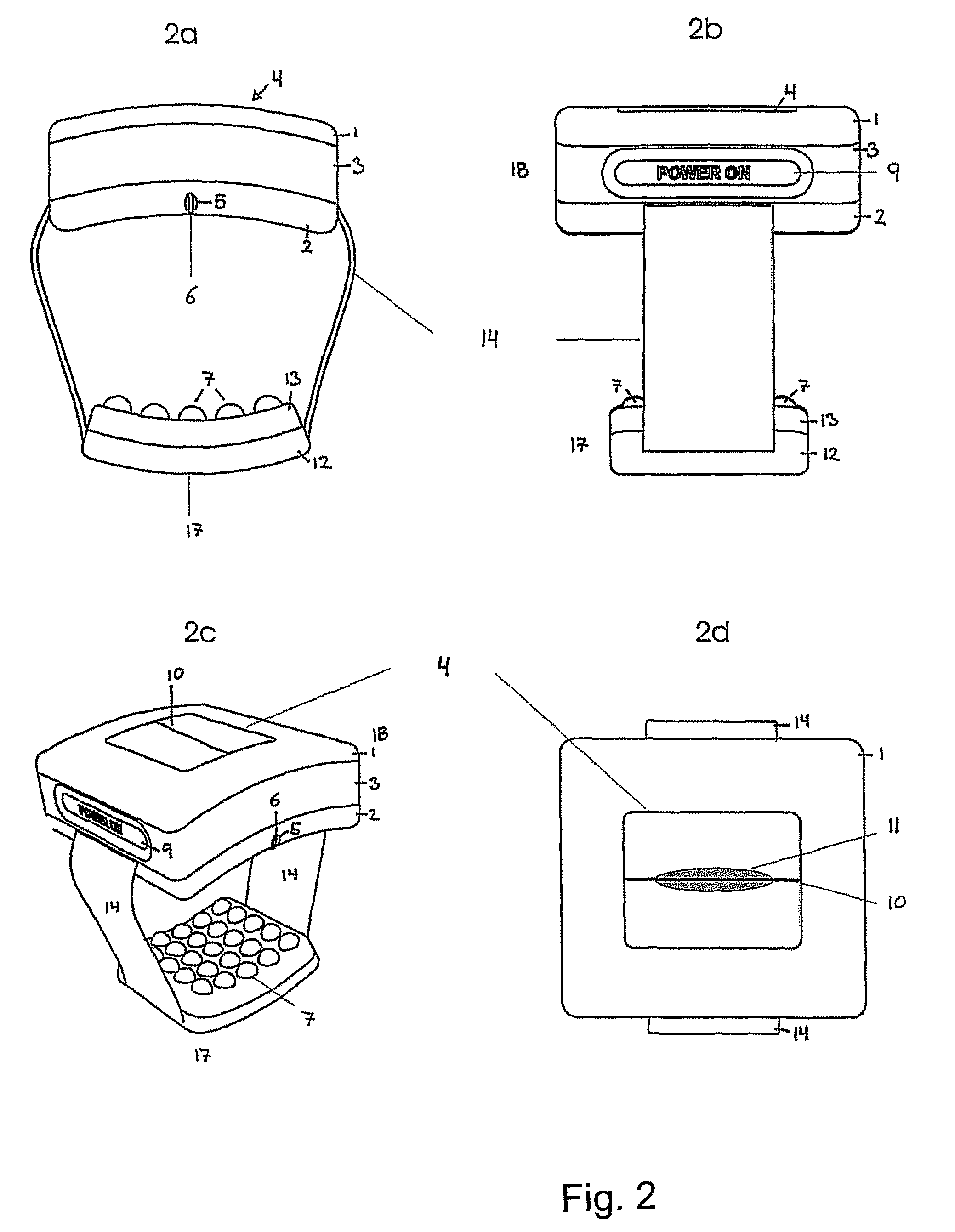Vein navigation device
a navigation device and vein technology, applied in the field of vein navigation devices, can solve the problems of hammer cannulation procedures, missing the vessel, extra vascular hemorrhaging, etc., and achieve the effects of maximizing blood absorption, best contrast, and illuminating subcutaneous structures
- Summary
- Abstract
- Description
- Claims
- Application Information
AI Technical Summary
Benefits of technology
Problems solved by technology
Method used
Image
Examples
Embodiment Construction
[0019]The present invention relates to a device and use of same for real time visualization of subcutaneous structures for the purpose of facilitating the insertion of medical instruments e.g. hypodermic needles, into said subcutaneous structures. The invention comprises a light emitting source, a camera and a display and is adapted to be placed upon a recipient of a medical treatment.
Adaptation to Recipient
[0020]The invention has been adapted to be placed upon the recipient in several ways. Firstly, the device is small and lightweight and therefore does not cause undue strain upon the recipient. Secondly, a fastening means can be used in conjunction with the device. Thirdly, the device itself can be shaped to fit a certain anatomical part e.g. an arm or it can be flexible in its form.
[0021]The size of the device is less than 1000 cm3. Preferably the device will be smaller than 500 cm3, 400 cm3 or 350 cm3, more preferably smaller than 300 cm3, 250 cm3, 180 cm3 or 125 cm3, most prefe...
PUM
 Login to View More
Login to View More Abstract
Description
Claims
Application Information
 Login to View More
Login to View More - R&D
- Intellectual Property
- Life Sciences
- Materials
- Tech Scout
- Unparalleled Data Quality
- Higher Quality Content
- 60% Fewer Hallucinations
Browse by: Latest US Patents, China's latest patents, Technical Efficacy Thesaurus, Application Domain, Technology Topic, Popular Technical Reports.
© 2025 PatSnap. All rights reserved.Legal|Privacy policy|Modern Slavery Act Transparency Statement|Sitemap|About US| Contact US: help@patsnap.com



